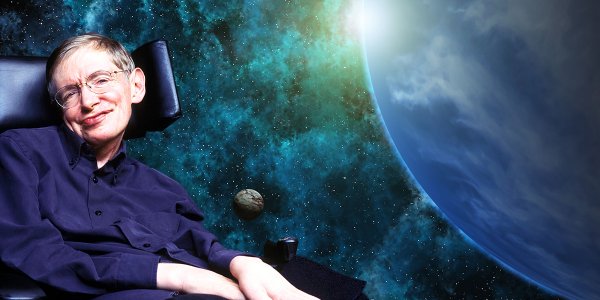Stephen Hawking Is Developing A Spacecraft Capable Of Reaching ‘Second Earth’ In 20 Years
Tags: News

By Amanda Froelich Truth Theory
Not long ago, renowned physicist Stephen Hawking announced that humans need to leave Earth within 100 years or prepare for the worst due to the effects of war, global warming and overpopulation. Now, it has been revealed that the professor is working on a spacecraft capable of traveling at a fifth of the speed of light. As The Independent reports, that means the ship could potentially reach the nearest star and send back images of a suspected “Second Earth” within 25 years.
In the past, Hawking explained that more than likely, Earth has not been contacted by an advanced civilization from another part of the universe because every time “intelligent” life evolves, it somehow annihilates itself. His fear is that if humans do not leave planet Earth, everything the humans species has become will be eradicated. Hawking also believes humans must leave Earth because the planet is too small for the growing population and is being drained “at an alarming rate.”
The spacecraft Hawking is working on developing is called a Star Chip, and would be just a few centimeters in size with a light sail weighing little more than a couple of grams. An array of lasers would power the ship and drive a tiny probe “on a beam of light” that travels about 100 million miles per hour. Said Hawking, “Such a system could reach Mars in less than an hour, reach Pluto in days, pass Voyager [the space probe launched in 1977] in under a week, and reach Alpha Centauri in just over 20 years.”
“Once there, the nano craft could image any planets discovered in the system, test for magnetic fields and organic molecules, and send the data back to Earth in another laser beam,” he added. “This tiny signal would be received by the same array of dishes that were used to transit the launch beam, and return is estimated to take about four light years.”
The scientist added that the Star Chips’ trajectories may include a fly-by of Proxima b, the Earth-size planet in the habitable zone of Alpha Centauri. Named Breakthrough Star Shot, the project is “a real opportunity for man to make early forays into outer space, with a view to probing and weighing the possibilities of colonisation,” said Hawking.
It is important to note that Hawking is not working on a spacecraft capable of transporting humans to other planets. He admitted: “Of course, this would not be human interstellar travel, even if it could be scaled up to a crewed vessel. It would be unable to stop.” Hawking continued, “But it would be the moment when human culture goes interstellar, when we finally reach out into the galaxy. And if Breakthrough Star Shot should send back images of a habitable planet orbiting our closest neighbour, it could be of immense importance to the future of humanity.”
When the craft is complete, spectators in the upcoming decades can expect “slightly distorted” imaged due to the effects of special relativity. Regardless, they will be happily received as it will be the first time any spacecraft has traveled enough to see such effects.
Commenting on the development, Hawking stated: “We are standing at the threshold of a new era. Human colonisation on other planets is no longer science fiction. It can be science fact.”
Hawking is interested in finding a planet similar to Earth because the moon and Mars are not suitable in his opinion. The Cambridge University scholar said the moon is too small, has no atmosphere and lacks a magnetic field to deflect solar radiation. Additionally, Mars lost its magnetic field and much of its atmosphere.
Nonetheless, he believes humans should create a base on the moon by 2020 and send people to Mars by 2025 — a plan NASA is already enacting. Within the next 200 to 500 years, Hawking said, interstellar travel for humans might be accomplished.
Hawking is confident his and others’ plans will come to fruition, as the human spirit is enduring, in his eyes. Extolling the virtues of the human attribution, he said “With this, we can roam anywhere in space and time. And I do.”
He added, “We can witness nature’s most exotic phenomena while in a car, snoozing in bed, or pretending to listen to someone boring at a party. And I do.”
Read More: Stephen Hawking: Greed And Stupidity Will End Humanity Earlier Than Expected
THIS ARTICLE IS OFFERED UNDER CREATIVE COMMONS LICENSE. IT’S OKAY TO REPUBLISH IT ANYWHERE AS LONG AS ATTRIBUTION BIO IS INCLUDED AND ALL LINKS REMAIN INTACT.
I am Luke Miller, content manager at Truth Theory and creator of Potential For Change. I like to blend psychology and spirituality to help you create more happiness in your life.Grab a copy of my free 33 Page Illustrated eBook- Psychology Meets Spirituality- Secrets To A Supercharged Life You Control Here
Leave Comment: